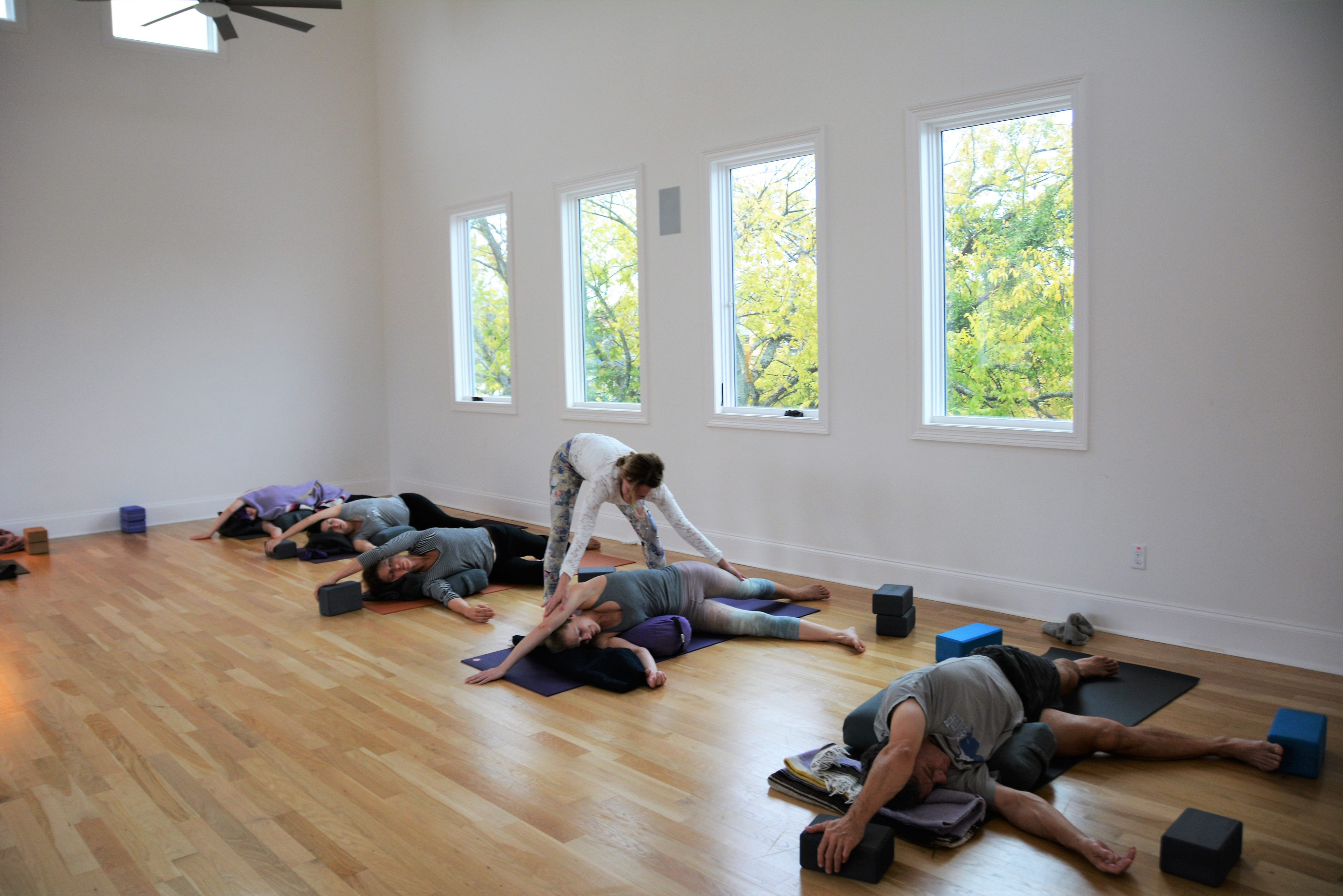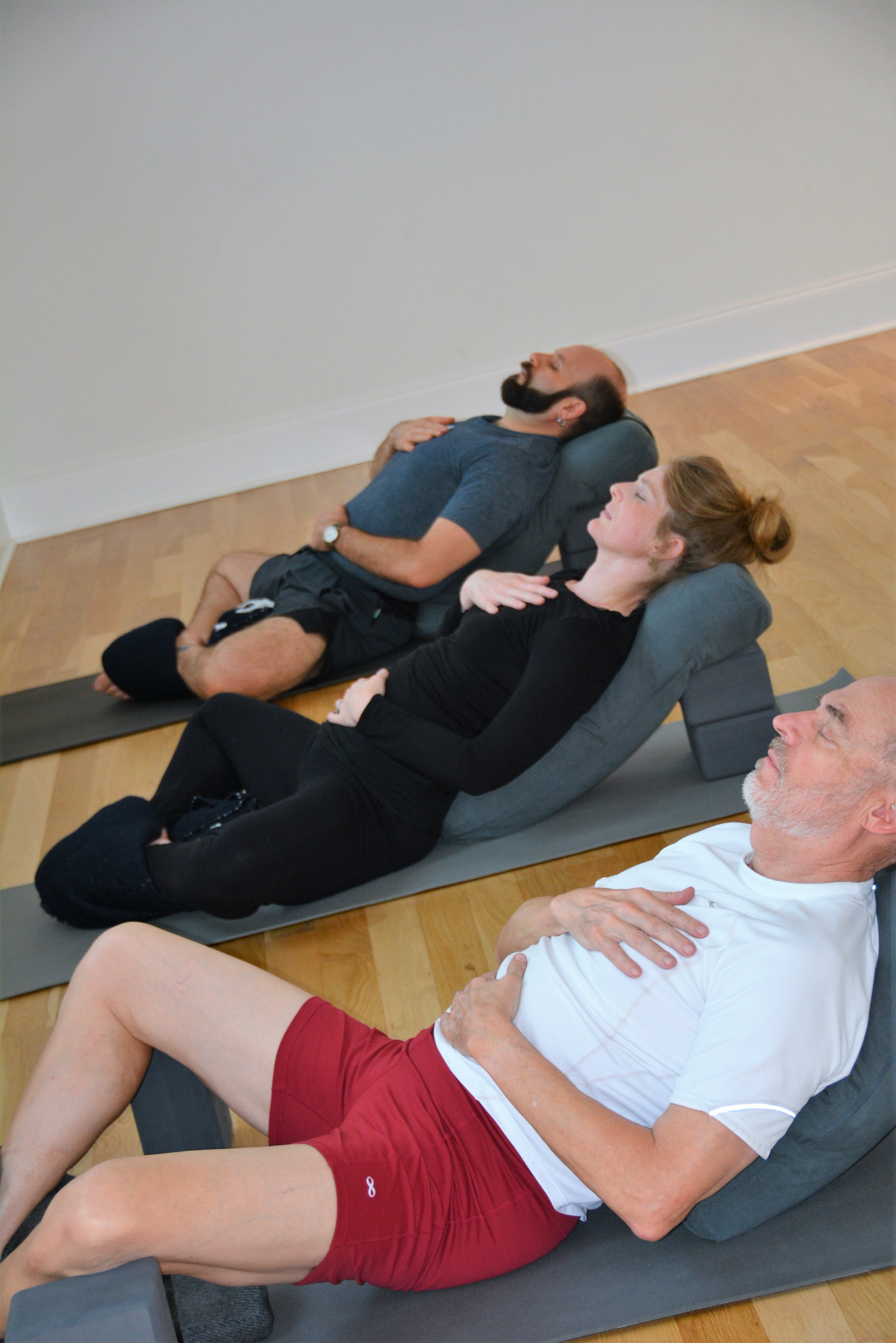On the 14th of January, I had the pleasure of attending a restorative yoga class with instructor Zoe Shipley and a room of fellow Ashtangis on a breezy, New Orleans afternoon. The clouds, framed by the studio’s many windows, were a cool, steel gray, but the air was light and calm inside.
Zoe’s warm smile filled the room, and as we made our way inside, she assisted everyone with gathering props, including bolsters, blocks, blankets, and eye pillows. Music with faint, peaceful chanting lifted to the high ceiling.
We placed our mats against the sides of the room, facing the center and each other, ready to use the walls as our anchors. The open space before us, so often filled with the vibrant energy of students moving through the intense Ashtanga sequence, lay quiet and still, somehow perfect in symbolizing the extra space we would soon be opening up inside ourselves. Zoe sat before the altar as we took our places, a sweet presence. She’s a wonderful, friendly spirit, approachable and kind, and expressed genuine excitement to help us relax and unwind. 
Restorative yoga is a fantastic complement to Ashtanga and its dynamic poses, a way to assist our bodies in gaining the rest we’ve earned. A restorative practice is beneficial for anyone, in fact. You can look at it like a very extended savasana! Benefits include helping to build a better awareness of our bodies, highlighting the connection between mind and body, and aligning the chakras. It also improves circulation, helps to regulate sleep cycles, and decreases anxiety.
Zoe’s theme for the day was “Grounding: Healthy Hips and Legs.” For the two hour period, she took us through six poses, some that we held for ten minutes or less, others longer. While explaining the poses, their benefits and exactly how to best experience them, she patiently assisted each of us, making sure we were comfortable and feeling restful. In addition to fine-tuning our positioning, she brought us essential oils for our wrists and foreheads, adding an extra “sense” element to the practice.
My favorite restorative pose was Pigeon (Supta Eka Pada Kapotasana). With a bolster fully beneath my torso and a blanket folded under one hip, I felt a deep stretch to the groin and pelvis, a sense of opening between my hips while my upper body and the props completely supported my weight. This restorative pigeon supports the reproductive system and stimulates digestion. Another benefit that Zoe told us about is the release of trapped emotions from the hips, which isn’t surprising considering that the intense stretch is happening alongside a complete support of the upper body’s weight, including the heart.
Zoe finished class with a twenty-five minute Yoga Nidra practice, known as yogic sleep. It’s a special kind of guided meditation that takes you to the fluid space between waking and sleeping, cultivating deep relaxation. It was the perfect finish to the day.
The experience of restorative yoga reminds me of my meditation practice and how, after sitting, I set an intention to try my best to bring mindfulness and presence to my daily life. Similarly, with restorative yoga, you have a period of extended stillness, in which you gain a familiarity with the process of grounding yourself, and this valuable tool can then be brought to every aspect of your life, including your yoga practice.
In all the poses in Zoe’s class, I felt a sense of opening as well as a comforting sense of being supported. I also felt a turning inward, as if the widening and stretching of my limbs was allowing me to make space inside, sending a gentle reminder to myself to always pay attention to the subtleties of the inner body. It became beautifully apparent that this process of opening was letting me take in more calm and more quiet. I left feeling refreshed, aligned, and mindfully aware, my body and mind both at peace.
Stay connected: Heart us on MindBody, follow us on Instagram & like us on Facebook.
Stay tuned: More Restorative classes coming in March!




Comments are closed.